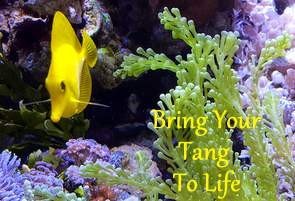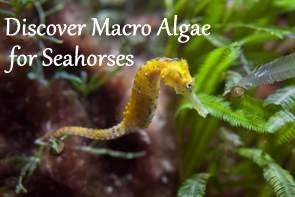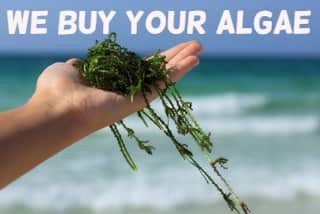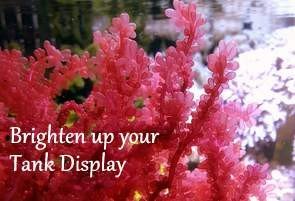Introduction to Macroalgae for the Reef Tank & Refugium
Macroalgae, or sometimes so-called seaweed, seems to have become within the last years more and more popular amongst marine aquarium hobbyists.
Previously macroalgae were often used specifically to provide a natural way to export the nutrients in the aquarium water, which means that the algae will grow by using compounds like nitrate, phosphate, ammonium and some heavy metals in the tank water.
During this photosynthesis process, live algae uses carbon dioxide too and turns this into additional oxygen for the aquarium inhabitants.
As well macroalgae will help to raise the pH level in the tank and increase the tank carbonate buffer capacity, which will provide a more stable alkalinity level.
In addition to this macroalgae is often used to provide additional hiding spaces for copepods and rotifers.
Nowadays thanks to the variety of available macroalgae species, macroalgae can still fulfil these very important functions but they add a very important benefit too . . .
. . . a beautiful and more natural looking tank to enjoy.
Very important is the right selection of macroalgae species, especially when they are meant to be placed in the reef display tank.
As there are invasive and non-invasive marine algae species available, it is recommended to get all the information you need about the macroalgae before adding it to the marine tank.
No one wants to have the nightmare to realise that they have chosen the wrong macroalgae for their tank after it overgrows the whole tank or the corals, right?!
Our aim is to provide you with all the informations you need to choose the right macroalgae for your reef tank and to get all the information you need to keep them successfully in your own marine aquarium.
You might wonder why we actually recommend having
Well, the truth lies in the difference.
But especially
So-called macroalgae on the other side, are easily explained marine algae species which you can see with your naked eye and contain mostly many cells and a defined larger structure.
Beautiful macroalgae species can enrich the whole marine tank by:
Ability to suppress unwanted microalgae, like green hair algae etc.
Reducing the nitrate and phosphate level in the marine aquarium
Providing shelter for small fishes, copepods and rotifers
Natural food source for critters and fishes to keep them happy and healthy especially Tang fishes need a good portion of daily algae to stay fit and healthy
Adding a more natural look
of the marine aquarium to enjoy
BTW: Algae is already the plural for these marine plants, and in the singular, it is called alga :)
Your Livealgae UK






 Current Delivery Delays Due To Storm Darcy
Current Delivery Delays Due To Storm Darcy  Christmas break for our macroalgae species.
Christmas break for our macroalgae species.  Red macroalgae species for the Reef Display Tank
Red macroalgae species for the Reef Display Tank